Sandia’s Michael Leveille earns People’s Choice Award at event
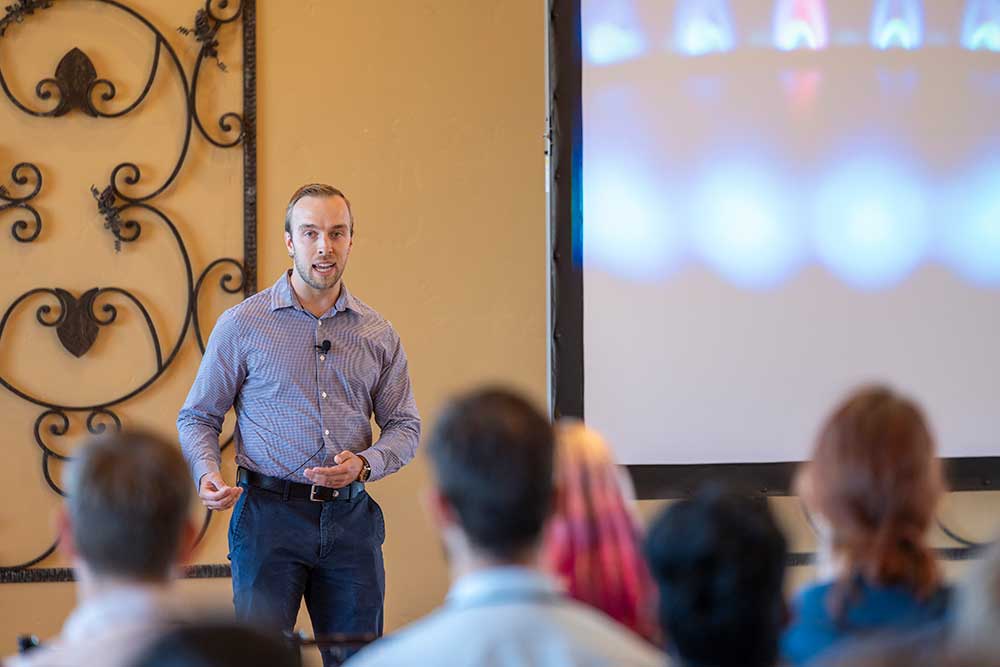
A crowd of supporters turned out Oct. 3 at Garré Vineyard in Livermore to cheer on their teammates in the fourth annual Bay Area Research SLAM, organized by Sandia’s Postdoc Program Office team, which is part of Academic Programs in the Chief Research Office. While the event may be about friendly competition, strong support for all presenters was apparent from the applause and noisemakers throughout the audience.
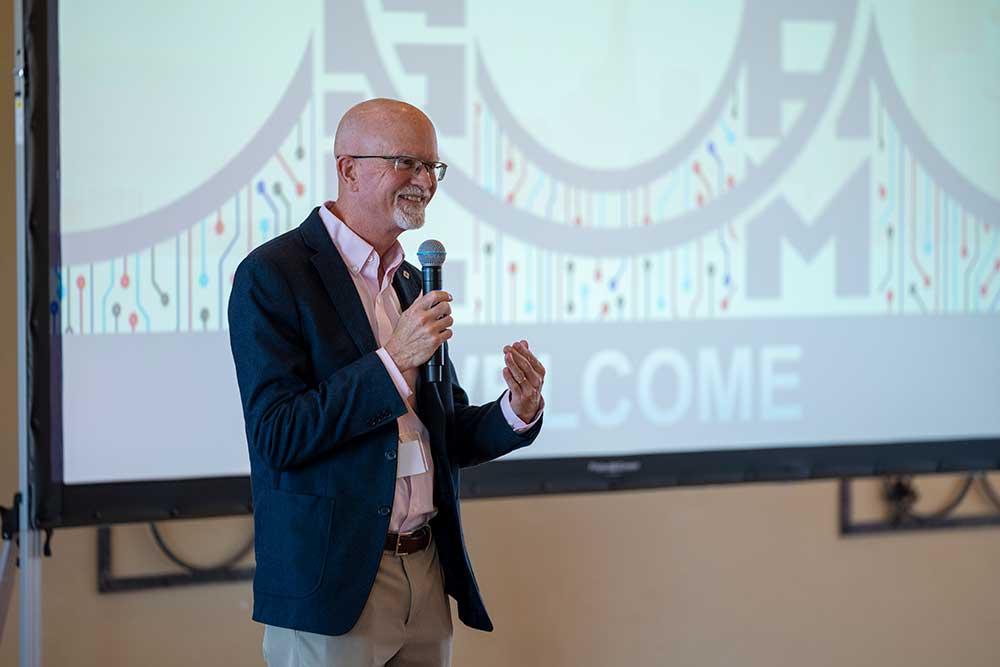
A dozen competitors each stood in front of a single slide as they took turns getting the audience enthused — in three minutes or less — about their postdoctoral research. There were three postdocs from each of the Bay Area’s DOE labs: Sandia, Lawrence Berkeley National Laboratory, Lawrence Livermore National Laboratory and SLAC National Accelerator Laboratory.
“I look forward to this event every year. It’s a lot of fun,” said Sandia’s Integrated Security Solutions Associate Labs Director Andy McIlroy, who welcomed attendees and participants. “This platform is a great opportunity for our talented researchers to share their most innovative ideas and gain valuable feedback from their peers. And it’s always inspiring to learn about the fascinating projects our colleagues across the national labs complex are working on.”
Andy served as host for the event as well as one of four judges, including Lawrence Livermore Deputy Director for Science & Technology Patricia Falcone, SLAC Laboratory Director John Sarrao and Lawrence Berkeley Laboratory Director Michael Witherell.
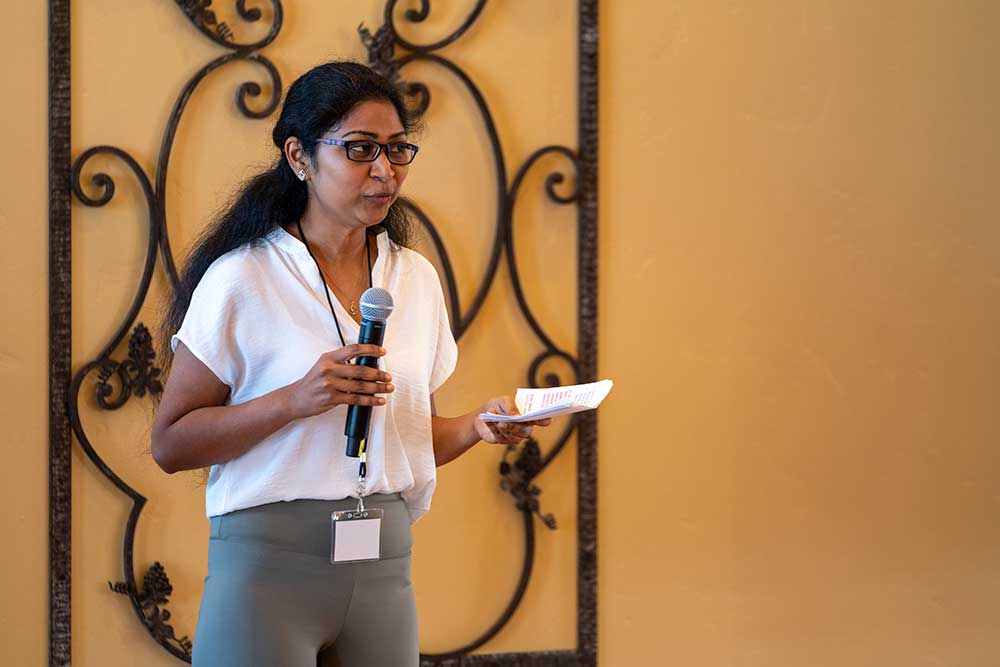
Sandia postdoctoral researcher Karuna Jetty served as one of four emcees for the event, along with Lawrence Livermore engineer Brandon Zimmerman, SLAC researcher Benjamin Ofori-Okai and Lawrence Berkeley scientist Lydia Rochbauer. The emcees were postdocs who competed in prior years.
Each of this year’s competitors previously earned prizes at their respective institutions’ internal postdoctoral speech competitions. For Bay Area SLAM, they were judged on the significance of the research, clearly specifying their contribution, the presentation’s clarity, their stage presence and the ability to captivate a non-specialist audience. Those in attendance at the winery and watching via livestream were also able to vote for their favorite piece.
Hydrogen-baked cookies — a tempting future treat?
Sandia’s Michael Leveille earned the People’s Choice Award for his work in materials chemistry with the presentation, “Repurposing Natural Gas Infrastructure for Green Hydrogen Transport.”
His challenge has been researching how the nation’s polyethylene pipelines may hold up to hydrogen versus natural gas. The work involves studying microscopic structures to determine if pipes can handle hydrogen safety and reliably.
“Some days, I’m taking pipes, cutting them up and putting them into hydrogen and completing experiments that simply have never been done before,” Michael said.
His research found what he called “a promising sign,” that after one week of exposure at different pipeline pressures, hydrogen did not permanently damage polyethylene.
“Understanding how hydrogen interacts with materials has far-reaching impacts,” Michael said. “In just a few years, we could be driving to visit family in hydrogen-powered vehicles, spend the holiday season warmed by hydrogen and bake ‘hydrogen’ cookies. Let’s take this step toward greener homes and a sustainable future.”
Science SLAM sensations
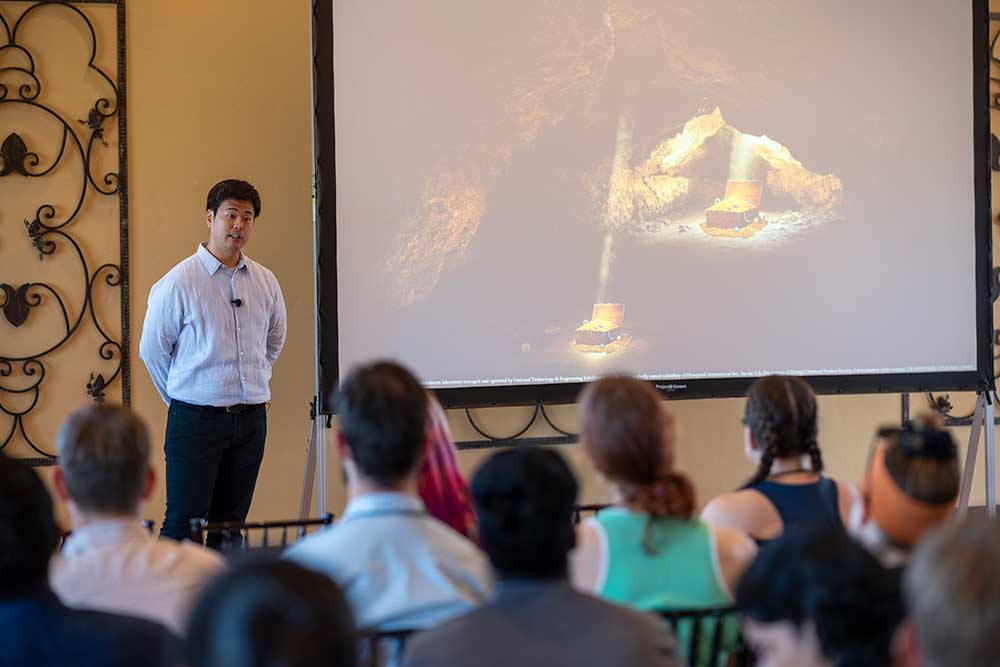
Sandia’s Jihoon Yang and Scott Monismith also participated. Jihoon, who works in bioresource and environmental security, also presented about hydrogen as a “treasure” that can help meet our future energy demand.
“Since the environments in which we store hydrogen gas are the preferred habitats for hydrogen-consuming, methane-producing bacteria, it is essential to understand the microbial characteristics of the subsurface environments to prevent potential losses, and this is the first step toward national energy security,” Jihoon said.
In power sources research and development, Scott presented on using computer simulation as a “virtual lab” to build better batteries.
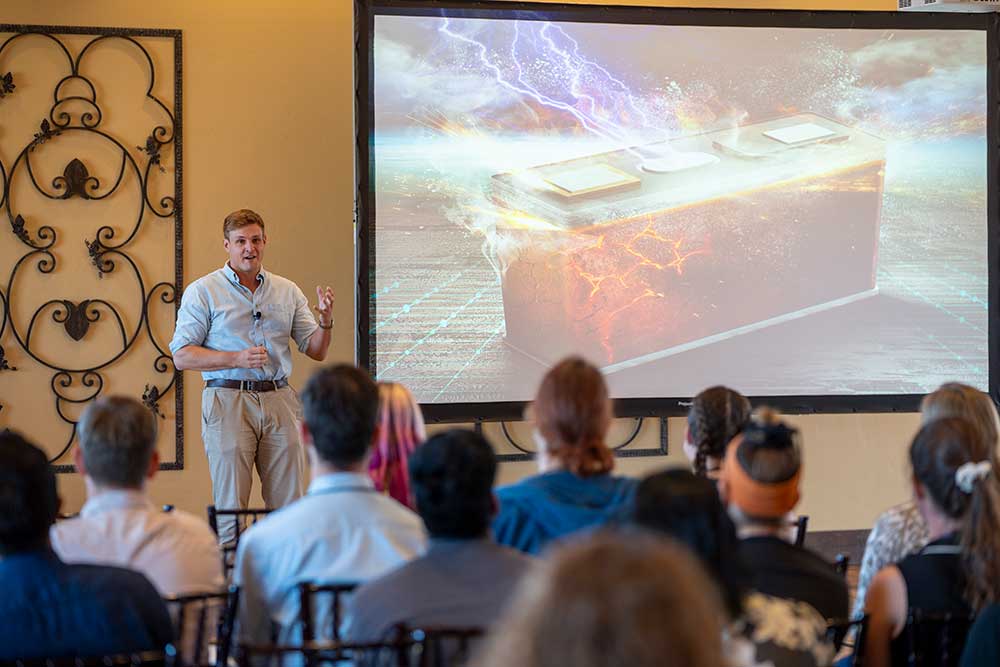
“Storing enough charge is an issue that affects many aspects of the energy storage industry, ranging from small consumer electronics like your phone to massive gigawatt-scale batteries that are intended to store energy for America’s electrical grid,” Scott said. “Batteries are fundamentally chemistry in a can.”
The judges awarded first place to Nicholas Cross from Lawrence Livermore for his engineering research, “Looking Inside Batteries to Predict Failure;” second place to Yumary Vasquez from Lawrence Berkeley for her biosciences research, “Going Viral … Literally: The Giant Virus Edition;” and third place to Caspar Donninson from Lawrence Livermore for his physical and life sciences research, “Agriculture and Solar Power: An Unlikely Alliance.” The team from Lawrence Livermore won the overall Bay Area Research SLAM trophy this year.